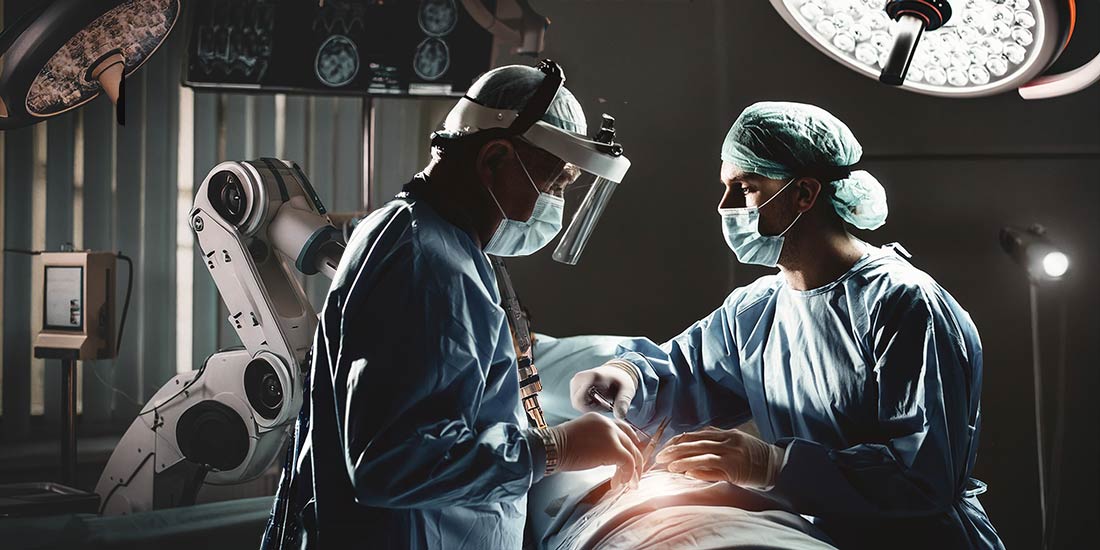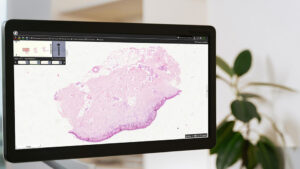Synopsis
Traditional surgical pathology workflow was dependent on manual processes and often it faced challenges arising from human errors and unmanageable workloads. However, in today’s healthcare scenario, artificial intelligence (AI) and surgical pathology are a perfect blend of the old pathology practices and future trends. Latest developments such as advanced image analysis, predictive modeling, and workflow optimization, are reshaping the landscape. AI is significantly improving accuracy, consistency, and the pace of diagnosing diseases. Let’s learn more about AI and its potential and explore some of the ongoing advancements in deep learning and collaborative efforts.
Artificial Intelligence in Healthcare
Healthcare continues to evolve, forcing medical professionals to redefine their approach to diagnosis and treatment. Artificial intelligence (AI) has become a revolutionary force in healthcare, and its applications extend to surgical pathology. Integrating AI into surgical pathology promises to change the way you diagnose, improve efficiency, and ultimately improve patient outcomes.
How is AI Transforming Surgical Pathology?
The emergence of artificial intelligence in the field of surgical pathology is transforming the field and changing the traditional landscape. With its advanced capabilities, AI is playing a new role in this crucial area of healthcare, fundamentally changing the diagnostic paradigm, improving accuracy, and contributing to precision medicine. Deep learning is the cornerstone of AI, allowing computers to automatically extract feature vectors from samples of pathological image data and automatically generate algorithms that in some cases surpass even human physicians. AI is transforming patient care in surgical pathology and accelerating the global expansion and democratization of high-quality healthcare, but AI’s role extends far beyond healthcare. It has an undeniable impact on the accuracy of disease analysis including cancer diagnosis.
How Does AI in Surgical Pathology Utilize Machine Learning Algorithms?
Like in every field, artificial intelligence in surgical pathology also uses machine learning algorithms to analyze large amounts of data. In surgical pathology, along with other relevant information, the data also includes anatomical pathology images and clinical data. The use of AI and machine learning algorithms offers benefits, including improved accuracy, precision, and faster turnaround of diagnosis. Artificial intelligence tools, when used properly, can improve diagnostic efficiency, eliminate human error, improve inter-observer reproducibility, and make valuable predictions when needed.
Image Analysis
Artificial intelligence is demonstrating unparalleled efficiency in image analysis. It can recognize nuances that are usually beyond human comprehension. When you apply sophisticated algorithms to big data, AI becomes adept at understanding complex patterns associated with disease. As a result, the diagnostic process improves, enabling you to make rapid diagnoses. AI greatly reduces the risk of misinterpretation by thoroughly analyzing digital images, thus improving overall diagnostic accuracy. Additionally, this advanced technology aids in the early detection of disease, which is key to improving a patient’s prognosis and treatment plan.
Predictive Modelling
Machine learning algorithms can be trained to analyze complex diseases. These sophisticated algorithms can efficiently interpret large amounts of clinical and pathological data to predict response to treatment. AI can identify complex patterns and relationships that can provide valuable help in optimizing treatment plans for individual patients. This helps healthcare professionals to optimize medical interventions with a high degree of accuracy. By tailoring treatment plans to the unique characteristics of each patient case, increases the effectiveness and reduces the likelihood of unwanted side effects.
Workflow Optimization
The use of artificial intelligence in surgical pathology streamlines workflows and helps pathologists better manage growing workloads. Some of the key tasks effectively performed by AI include digitally screening slides, identifying areas of interest, and prioritizing information by urgency. This enables you to invest resources based on informed decisions and interpretations. This not only speeds up work time, but also reduces the risk of fatigue-related errors.
How Are Advancements Shaping the Future of Surgical Pathology?
The future of artificial intelligence in surgical pathology has bright prospects. The most important advantage is a multidisciplinary approach, including proteomics, genomics, and AI-based quantification of multiple biomarkers. This approach is particularly valuable for improving the treatment of a patient’s tumor. The continued development of deep learning techniques with the integration of multiple data sources is expected to increase the accuracy and depth of AI-based research. In addition, collaborative efforts between researchers, clinicians, and engineers will be key to improving and expanding the application of AI in pathology.
Conclusion
The integration of artificial intelligence (AI) in surgical pathology marks a major turning point, providing unparalleled improvements in accuracy and efficiency. The critical role of AI in image analysis, predictive modeling, and workflow optimization is changing the landscape of traditional research. This progressive technology is increasing the accuracy of diagnosis, promising a future in which healthcare is not only more accurate but also more efficient. Collaborative efforts and continued development are expected to enhance the potential of AI in surgical pathology. It will further ensure that the process is accurate, accessible, and tailored to the unique needs of patients worldwide. As the field moves toward precision medicine, surgical pathology remains at the forefront, embracing and enabling the enormous potential of artificial intelligence to redefine healthcare.











